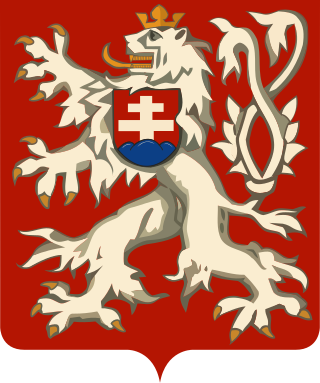Top Qs
Timeline
Chat
Perspective
Kde domov můj
National anthem of the Czech Republic From Wikipedia, the free encyclopedia
Remove ads
"Kde domov můj" (pronounced [ɡdɛ ˈdomof muːj] ⓘ), known in English as "Where My Home Is", is the national anthem of the Czech Republic. It was composed by František Škroup and written by Josef Kajetán Tyl.[1]
This article needs additional citations for verification. (December 2017) |
Remove ads
History
Summarize
Perspective
The piece was written as a part of the incidental music to the comedy Fidlovačka aneb Žádný hněv a žádná rvačka (Fidlovačka, or No Anger and No Brawl). It was first performed by Karel Strakatý at the Estates Theatre in Prague on 21 December 1834. The original song consists of two verses (see below). Although J. K. Tyl is said to have considered leaving the song out of the play, not convinced of its quality, it soon became very popular among Czechs and was accepted as an informal anthem of a nation seeking to revive its identity within the Habsburg monarchy.
Soon after Czechoslovakia was formed in 1918, the first verse of the song became the Czech part of the national anthem, followed by the first verse of the Slovak song "Nad Tatrou sa blýska". The songs reflected the two nations' concerns in the 19th century[2][page needed] when they were confronted with the already fervent national-ethnic activism of the Germans and the Hungarians, their fellow ethnic groups in the Habsburg Monarchy. Because of the linguistic and ethnic diversity of the First Republic, official translations were made into Hungarian and German as well.[3][page needed]
During World War II German-controlled Protectorate of Bohemia and Moravia kept that song as its anthem.
With the split of Czechoslovakia in December 1992, the Czech Republic kept Kde domov můj and Slovakia kept Nad Tatrou sa blýska as their anthems. While Slovakia extended its anthem by adding a second verse, the Czech Republic's national anthem was adopted unextended, in its single-verse version.[1]
In 1882, Antonín Dvořák used Kde domov můj in his incidental music to the František Ferdinand Šamberk play Josef Kajetán Tyl, Op. 62, B. 125. The overture is often played separately as a concert work entitled Domov můj (My Home).
Remove ads
Lyrics
Summarize
Perspective
Current official
English Wikisource has original text related to this article:
The following are the lyrics according to Appendix 6 of Czech Act No. 3/1993 Coll., as adapted by Act No. 154/1998 Coll.
Original version (1834)
National anthem of Czechoslovakia (1918–1992)

Czechoslovak Republic
The first stanza, along with that of the current Slovak anthem "Nad Tatrou sa blýska" as the second stanza, became from 1918 to 1992 the national anthem of Czechoslovakia.
Remove ads
Notes
- See Help:IPA/Czech and Czech phonology.
References
External links
Wikiwand - on
Seamless Wikipedia browsing. On steroids.
Remove ads


